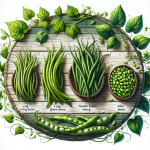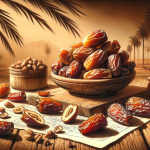Types Of Flour
Flour is an essential ingredient used in baking and cooking. It is a powdery substance made by grinding grains, nuts, seeds, or roots. There are many different types of flour available, each with its own unique properties and uses. Understanding the different types of flour and their characteristics is crucial to achieving the desired texture and flavor in baked goods.
The most common type of flour used in baking is all-purpose flour. It is made from a blend of hard and soft wheat and has a moderate protein content. All-purpose flour can be used in a variety of recipes, from cakes and cookies to bread and pizza crusts. Other types of flour, such as cake flour, bread flour, and pastry flour, have different protein levels and are better suited to specific baking tasks. Specialty and alternative flours, such as almond flour, coconut flour, and gluten-free flour, are also becoming more popular as people look for healthier and allergy-friendly options.
Key Takeaways
- There are many different types of flour available, each with its own unique properties and uses.
- Understanding the characteristics of different types of flour is crucial to achieving the desired texture and flavor in baked goods.
- Specialty and alternative flours are becoming more popular as people look for healthier and allergy-friendly options.
Basics of Flour

Flour is a powdery substance that is used in cooking and baking. It is made by grinding grains, nuts, seeds, or roots into a fine powder. Flour is a staple ingredient in many recipes, and it comes in many different types and varieties.
Composition and Types
Flour is primarily made up of three parts: the bran, the germ, and the endosperm. The bran is the outer layer of the grain, and it is high in fiber. The germ is the part of the grain that contains the most nutrients, including vitamins, minerals, and healthy fats. The endosperm is the largest part of the grain, and it contains mostly carbohydrates and protein.
The most common type of flour is wheat flour, which is made from grinding wheat grains. However, there are many other types of flour available, including rice flour, almond flour, and gluten-free flour. Gluten is a protein that is found in wheat, barley, and rye, and it is what gives bread its chewy texture. Gluten-free flour is made from grains that do not contain gluten, such as rice, corn, or potato starch.
Wheat Flour Varieties
Wheat flour comes in many different varieties, each with its own unique properties. All-purpose flour is the most common type of wheat flour, and it can be used for a wide range of recipes, including cakes, cookies, and bread. Whole wheat flour is made from the entire wheat grain, including the bran, germ, and endosperm. It is higher in fiber and nutrients than all-purpose flour, but it can be denser and harder to work with.
Bread flour is a high-protein flour that is ideal for making bread. It has a protein content of around 12-14%, which helps the dough to rise and gives the bread a chewy texture. Pastry flour is a low-protein flour that is ideal for making pastries and cakes. It has a protein content of around 8-10%, which makes it lighter and more tender than bread flour.
Gluten-Free Options
For those who are gluten intolerant or have celiac disease, there are many gluten-free options available. Rice flour is a popular gluten-free flour that can be used in a wide range of recipes, including bread, cakes, and cookies. Almond flour is another gluten-free option that is high in protein and healthy fats. It is ideal for making gluten-free cakes and cookies.
In conclusion, flour is a versatile ingredient that comes in many different types and varieties. Understanding the different types of flour and their properties can help you to choose the right flour for your recipe and achieve the best results.
Flour in Baking
When it comes to baking, flour is one of the most important ingredients. It provides the structure and texture for baked goods. There are several types of flour available, but each one has a different protein content, which plays a crucial role in the baking process.
Understanding Protein Content
Protein content is the most important factor to consider when choosing flour for baking. The higher the protein content, the stronger the flour is, and the more gluten it contains. Gluten is a protein that gives baked goods their structure and elasticity.
Role of Gluten in Baking
Gluten is responsible for giving bread its chewy texture and helping it rise. When mixed with water, gluten forms long strands that trap air bubbles, causing the dough to rise. The more gluten in the flour, the more the dough will rise.
Leavening Agents and Flour
Leavening agents such as baking powder and yeast are also important when baking with flour. Baking powder is a chemical leavening agent that reacts with moisture and heat to create carbon dioxide gas, which causes baked goods to rise. Yeast is a biological leavening agent that feeds on the sugars in the dough and produces carbon dioxide gas, which causes the dough to rise.
Different types of flour are better suited for different types of baked goods. For example, all-purpose flour is versatile and can be used for a variety of baked goods, while cake flour is best for making delicate cakes. Bread flour is best for making yeast breads because it has a high protein content that helps the dough rise and gives the bread its chewy texture.
In conclusion, understanding the protein content of flour and its role in baking is crucial for achieving the desired texture and structure in baked goods. Using the right type of flour for the specific recipe and leavening agent is also important for achieving the desired rise and texture.
Specialty and Alternative Flours
When it comes to specialty and alternative flours, there are a variety of options available to those who want to experiment with different types of flours. Here are some of the most popular types of alternative flours and their uses.
Nut and Seed Flours
Nut and seed flours are becoming increasingly popular due to their unique flavors and nutritional benefits. Some of the most common nut and seed flours include almond flour, coconut flour, and sesame flour. Almond flour is a great gluten-free flour option that can be used for baking cakes, cookies, and bread. Coconut flour is another popular gluten-free flour that is high in fiber and can be used in a variety of baked goods. Sesame flour is a great source of protein and can be used to make bread, crackers, and other baked goods.
Ancient Grains and Legume Flours
Ancient grains and legume flours are also gaining popularity due to their nutritional benefits. Some of the most common ancient grain flours include amaranth flour, barley flour, and spelt flour. Amaranth flour is a great source of protein and can be used to make bread, pancakes, and other baked goods. Barley flour is high in fiber and can be used for baking bread and other baked goods. Spelt flour is a great alternative to wheat flour and can be used for making bread, pasta, and other baked goods.
Cereal and Root Flours
Cereal and root flours are also great options for those looking to experiment with alternative flours. Some of the most common cereal flours include corn flour and semolina flour. Corn flour is a great gluten-free flour option that can be used for making tortillas, cornbread, and other baked goods. Semolina flour is a great option for making pasta and other Italian dishes. Potato flour is a great gluten-free flour option that can be used for making bread, pancakes, and other baked goods. Sorghum flour is another great gluten-free flour option that can be used for making bread, cakes, and other baked goods.
Overall, there are many different types of specialty and alternative flours available, each with their own unique flavor and nutritional benefits. By experimenting with different types of flours, you can add variety to your diet and discover new flavors and textures in your baked goods.
Flour Treatments and Their Effects
Bleached vs. Unbleached Flour
Bleached flour undergoes a chemical process that whitens the flour and makes it softer. The bleaching process is usually done using chemical bleaching agents such as chlorine dioxide. The chlorine dioxide is allowed to react with the flour to break down the carotenoids and xanthophylls that give the flour its natural yellowish color. The bleaching process also weakens the gluten in the flour, making it softer and more pliable.
Unbleached flour is not chemically treated and has a slightly yellowish color due to the presence of carotenoids and xanthophylls. Unbleached flour is usually denser and has a stronger gluten structure compared to bleached flour. It is ideal for bread making since it provides a firmer texture and better structure to the dough.
Enriched Flours
Enriched flours are those that have been supplemented with vitamins and minerals that are lost during the milling process. The most common nutrients added to enriched flours are niacin, riboflavin, thiamin, and iron. Enriched flour is usually labeled as such and is required by law in the United States for all flours made from wheat that are not whole grain.
Self-rising flour is a type of flour that has been pre-mixed with baking powder and salt. It is usually made from soft wheat and is used for making biscuits, cakes, and other baked goods that require a tender crumb. Self-rising flour is usually bleached and enriched.
In conclusion, the type of flour used in baking can have a significant impact on the final product. Bleached flour is softer and more pliable, while unbleached flour is denser and has a stronger gluten structure. Enriched flours are supplemented with vitamins and minerals lost during the milling process. Self-rising flour is pre-mixed with baking powder and salt and is used for making baked goods that require a tender crumb.
Selecting the Right Flour for Recipes
When it comes to baking, selecting the right type of flour can make all the difference in the final outcome of your recipe. There are many different types of flour available, each with its unique properties that make it suitable for specific baked goods. In this section, we will explore the different types of flour and which ones are best suited for different types of recipes.
Breads and Yeasted Doughs
When making bread or other yeasted doughs, it’s essential to use flour with a high protein content. This is because the protein in the flour forms gluten when combined with water, which gives bread its characteristic chewy texture. Bread flour is the best choice for these types of recipes, as it has a protein content of around 12-14%.
Pastries and Delicate Baked Goods
For pastries and delicate baked goods, such as pie crusts, cakes, and cookies, it’s best to use a low-protein flour. Cake flour and pastry flour are both excellent choices for these recipes. Cake flour has a protein content of around 7-9%, making it ideal for light and fluffy cakes and cupcakes. Pastry flour has a slightly higher protein content of around 9-10% and is perfect for tender pie crusts, scones, and biscuits.
Quick Breads and Other Uses
When making quick breads, pancakes, muffins, or other baked goods that don’t require yeast, all-purpose flour is a great choice. It has a protein content of around 10-12%, making it versatile enough to use in a wide variety of recipes.
It’s also worth noting that there are specialty flours available for specific recipes, such as pizza dough, pasta, bagels, pretzels, and crackers. These flours are formulated to provide the perfect texture and flavor for these types of baked goods.
In conclusion, selecting the right type of flour is crucial to the success of your baked goods. By understanding the different types of flour and their unique properties, you can ensure that your recipes turn out perfectly every time.






